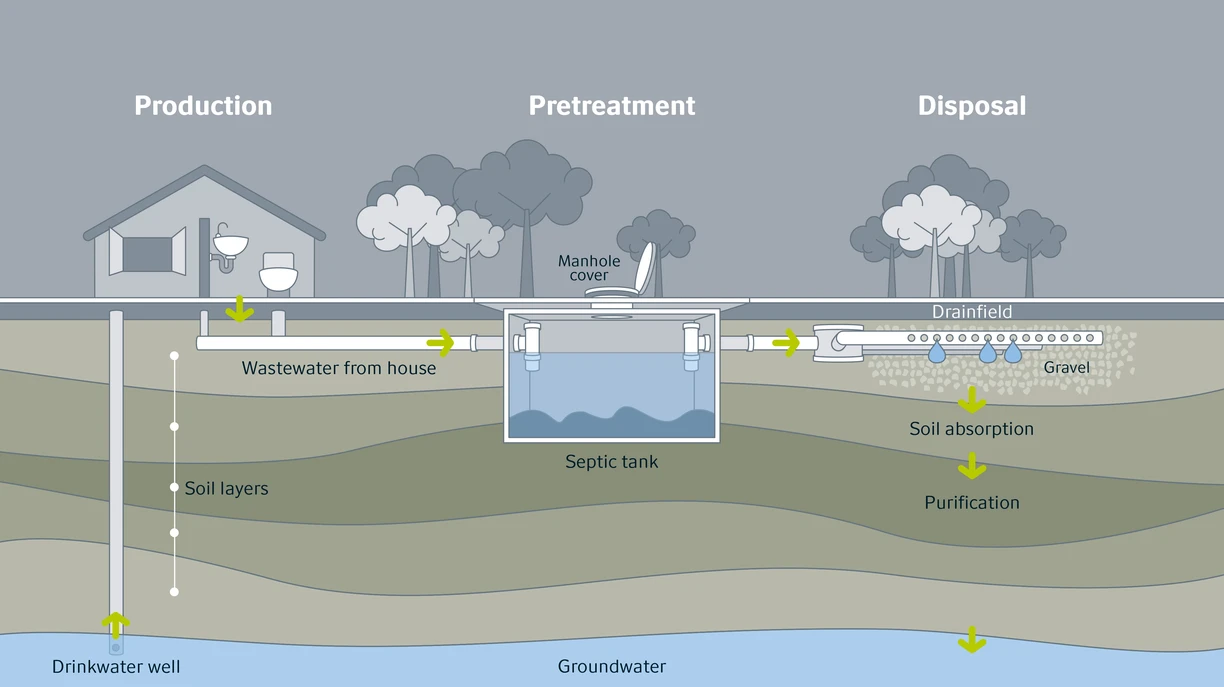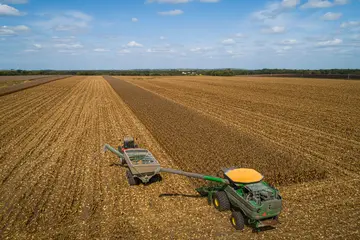A quick and easy guide to septic systems
Take a closer look at how septic tanks work
When we take showers or baths, flush the toilet, or do laundry or dishes, what goes down the drain ends up in one of two places – a public sewer system or an on-site septic system. This article focuses on on-site septic systems, which are used in rural locations that cannot be connected to a public sewer system. A septic system consists of two parts: a septic tank and a drain field.
What is a septic tank?
A septic tank is a plastic or concrete container that is buried underground and connected via a drainpipe to a home or business. The size of a septic tank varies according to the location it serves. But all act as a temporary holding and treatment tank for wastewater.
Septic tanks need to be understood, managed properly, and pumped (physical removal of the waste) on occasion as part of a good maintenance program.
What does a septic tank do?
As a tank fills with wastewater, the waste naturally separates into three layers: scum, bulk liquid and sludge. The sludge layer is on the bottom. It consists of heavy, insoluble material such as fecal waste and toilet paper. The scum layer, at the top, comprises fats, oils and greases that float to the surface. The bulk liquid layer in the middle typically takes up most of the tank volume. An aqueous (watery) layer, it contains organic and inorganic material that has not settled to the bottom or floated to the top.
The design of the septic tank helps prevent the sludge and scum layers from leaving the tank. The bulk layer, however, drains from the septic tank into the drain field via a plastic pipe.
What is a drain field?
A drain field, sometimes called a leach field, is an area outside of a dwelling or building. The wastewater draining from the septic tank gets distributed in the drain field through a series of perforated pipes buried in the ground. The pipes are typically surrounded by loose gravel or crushed rock to aid in drainage.
In the drain field, the wastewater is filtered by the soil and further treated by naturally occurring microorganisms as it makes its way to a water table (the level below the surface of the ground where water can be found).

How does the septic system work?
In the septic tank, microorganisms – both naturally occurring and those added via bioaugmentation – work to break down organic material and utilize inorganic components to help maintain the “health” of the system. Microorganisms can help control the thickness of the scum layer, reduce the depth of the sludge layer and “clean” the bulk liquid portion. They do their work before the waste flows out of the tank and into the drain field, where the soil itself further treats the waste.
A poorly maintained system, whether due to lack of knowledge or poor practices, can lead to serious and potentially expensive problems. A clogged tank can back up into the dwelling or facility, while a clogged drain field can lead to septic waste pooling in the yard or field.
Understanding what a septic system is and how it works – and how bioaugmentation can help maintain the overall “health” of the system between regular pumpings – helps prevent problems.


